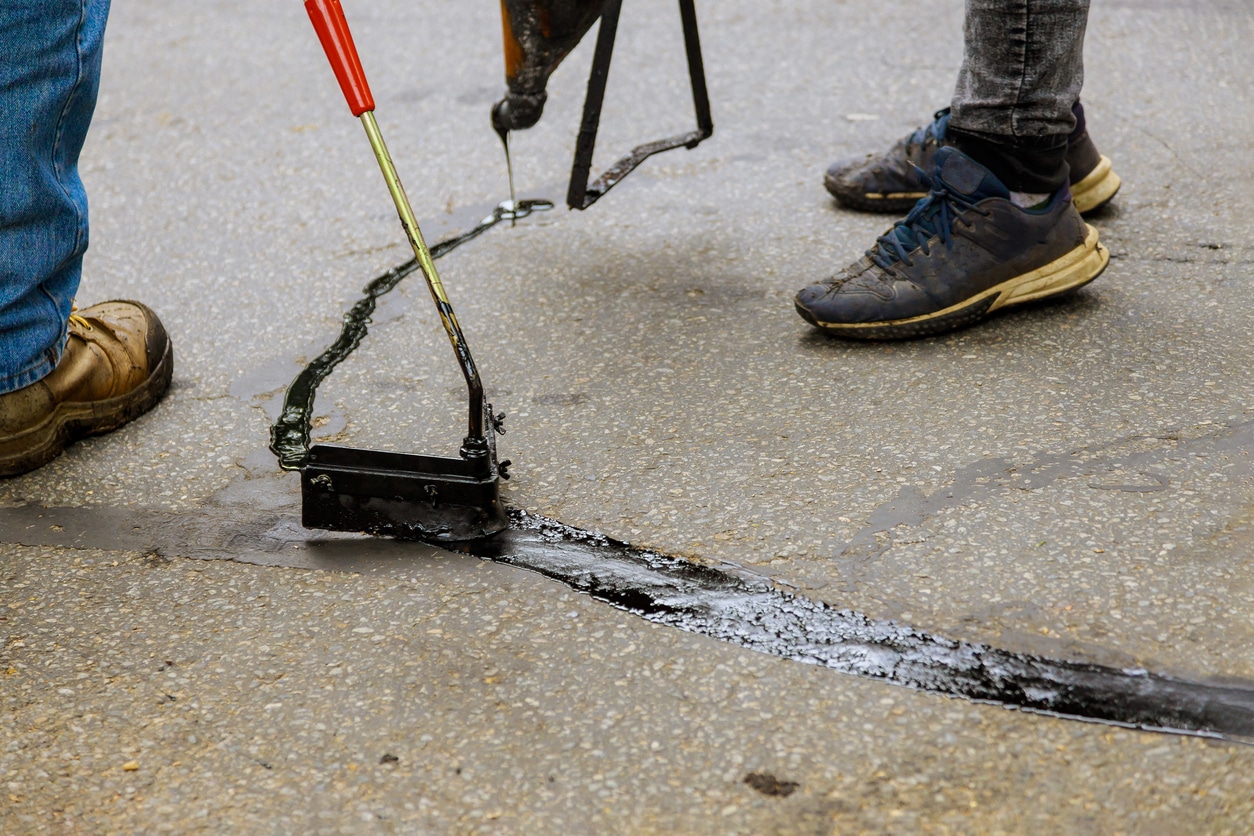Cold Mix Asphalt Vs. Hot Mix Asphalt: Which Is Right for You?

Make-up Differences
Cold mix and warm mix asphalts vary dramatically in their composition, with unique features that impact their performance and applications. Cold mix asphalt is generated by emulsifying the asphalt binder with water and an emulsifying representative before mixing it with accumulation. This method enables the asphalt to be practical at reduced temperatures, making it optimal for momentary repair services and for use in cooler climate condition. Hot mix asphalt, on the other hand, is produced at heats, commonly between 300-350 ° F, which assists to accomplish far better compaction and a more sturdy end product. The warm mix asphalt manufacturing procedure entails heating the accumulation and asphalt binder separately prior to integrating them at the asphalt plant.
Moreover, cool mix asphalt has a tendency to be less dense and more adaptable than hot mix asphalt. This adaptability makes it far better fit for locations with greater degrees of activity, such as driveways or roadways with rush hour. On the other hand, hot mix asphalt is known for its high sturdiness and resistance to rutting and fracturing, making it a preferred choice for freeways and high-traffic roadways where longevity is critical.
Installment Refine Variances
The process of setting up chilly mix and hot mix asphalt shows remarkable variations in their treatments and requirements. Cold mix asphalt, being a more adaptable product, can be used directly from the bag or container onto the gap or damaged area. It requires marginal preparation job, such as cleansing the area and condensing the cool combine with hand tools. This makes it a hassle-free choice for fast and short-term fixes. In comparison, warm mix asphalt requires an extra sophisticated installation process. It involves heating the mix to high temperatures prior to laying it down on an effectively prepared base. The prep work includes condensing the base, applying a tack layer, and using hefty machinery like pavers and compactors for a smooth and durable coating. Due to the home heating needs, warm mix asphalt installments are usually performed by professionals with specific tools, ensuring a much more irreversible and structurally audio result.
Resilience and Long Life Variables
When considering asphalt options, my blog durability and long life are vital elements to examine for long lasting pavement efficiency. Hot mix asphalt (HMA) is recognized for its remarkable resilience and longevity.
In regards to longevity, HMA normally outmatches CMA because of its exceptional toughness and resistance buildings. HMA sidewalks have a longer life span, calling for less constant repair services and upkeep, which can translate to cost financial savings over time. Additionally, HMA sidewalks are much more conveniently adjustable to fulfill certain job needs, even more boosting their durability.
Price Considerations
Considering the financial implications is an important facet when examining the option between hot mix asphalt (HMA) and cool mix asphalt (CMA) for pavement projects. While the first price of hot mix asphalt is commonly higher than that of cool mix asphalt, HMA usually gives a helpful hints much more economical remedy in the lengthy run due to its exceptional sturdiness and longevity.
In addition to product expenses, it's essential to think about the costs linked with installation and upkeep when contrasting HMA and CMA. Ultimately, the decision between HMA and CMA need to take into account not simply the first expense yet also the long-lasting economic ramifications to establish the most affordable alternative for the specific pavement task.
Environmental Effect Contrast
Contrast of the ecological impacts between warm mix click to find out more asphalt (HMA) and cold mix asphalt (CMA) exposes unique distinctions in sustainability practices. HMA production requires high temperatures, bring about increased energy intake and greenhouse gas emissions. The process also releases volatile organic compounds (VOCs) and harmful air contaminants (HAPs) right into the environment. On the other hand, CMA is created and used at reduced temperature levels, minimizing power use and discharges dramatically. The lower manufacturing temperature levels of CMA lead to reduced fuel usage and reduced degrees of carbon dioxide exhausts, making it a much more ecologically pleasant option.
In addition, the use of CMA often includes recycling existing asphalt sidewalk, promoting resource preservation and reducing the quantity of waste sent to land fills. By choosing for CMA over HMA, roadway construction tasks can contribute positively to environmental preservation initiatives.
Conclusion
To conclude, the selection in between cool mix asphalt (CMA) and hot mix asphalt (HMA) depends on different elements such as make-up, installation process, toughness, longevity, price, and environmental impact. angle parking. While CMA supplies a cost-efficient and quick remedy for minor repair work, HMA makes sure premium durability and durability for hefty website traffic locations. Consider these elements meticulously to determine which kind of asphalt is the best option for your paving needs
:max_bytes(150000):strip_icc()/barricade-tape-sealed-driveway-big-56a583145f9b58b7d0dd3d87.jpg)
Taking into consideration the financial ramifications is a crucial aspect when evaluating the option in between warm mix asphalt (HMA) and cold mix asphalt (CMA) for pavement jobs. While the initial expense of warm mix asphalt is typically higher than that of chilly mix asphalt, HMA often provides a more cost-effective solution in the long run due to its superior sturdiness and long life. asphalt repair.Comparison of the environmental effects in between warm mix asphalt (HMA) and cool mix asphalt (CMA) discloses distinct distinctions in sustainability practices.In conclusion, the choice between cold mix asphalt (CMA) and hot mix asphalt (HMA) depends on various factors such as composition, installation process, resilience, longevity, expense, and environmental effect